For the 2019 Carnival of Venice, we have a collection of fascinating costume sketches which the theatrical world of the 20th century admired. Today, these sketches can become a source of inspiration for the sophisticated members of "Blame The Moon."
"Blame The Moon" is the theme at the 2019 Carnival of Venice, which originates from William Shakespeare's play "Othello (The Tragedy of Othello, the Moor of Venice)", in which, the main character speaks of the moon: "It is the very error of the moon; She comes more nearer earth than she was wont, And makes men mad."
Romantic airy silhouettes, fascinating Oriental motifs or passionate bright imagery from the Hermitage Fine Art collection:
Sketches from famous 20th century theatre, ballet and cinema artists and designers - Léon Bakst, Erté, Georges Annenkov, Pablo Picasso and Konstantin Juon.
"Blame The Moon" is the theme at the 2019 Carnival of Venice, which originates from William Shakespeare's play "Othello (The Tragedy of Othello, the Moor of Venice)", in which, the main character speaks of the moon: "It is the very error of the moon; She comes more nearer earth than she was wont, And makes men mad."
Romantic airy silhouettes, fascinating Oriental motifs or passionate bright imagery from the Hermitage Fine Art collection:
Sketches from famous 20th century theatre, ballet and cinema artists and designers - Léon Bakst, Erté, Georges Annenkov, Pablo Picasso and Konstantin Juon.
BAKST, Léon (1866 - 1924)
"Costume design for the tragedy of Phaedra" for Ida Rubinstein, 1922
Paper, gouache, gold paint
"Costume design for the tragedy of Phaedra" for Ida Rubinstein, 1922
Paper, gouache, gold paint
In 1909, the Italian writer and playwright Gabriele D'Annunzio presented his adaptation of the legendary Greek tragedy "Phaedra". The costumes for the ballet were designed by Lev Bakst and presented to the public on June 8, 1923 at the Paris Opera. Ida Rubinstein, with whom Bakst has repeatedly worked, was the leading actress. This image depicts one of the first costume sketches for the leading role, made in 1922.
The sketch will be presented at the AUCTION on April 25-27, 2019, in Monte Carlo.
The sketch will be presented at the AUCTION on April 25-27, 2019, in Monte Carlo.
BAKST, Léon (1866 - 1924)
"Costume design for the ballet Le Dieu bleu" 1910
Paper, watercolour, gouache, ink.
"Costume design for the ballet Le Dieu bleu" 1910
Paper, watercolour, gouache, ink.
The ballet "Le Dieu bleu" was proposed for the coronation of George V, the grandson of Queen Victoria, to the English throne in 1911. The ballet was set to a libretto by Jean Cocteau, choreographed by Mikhail Fokine and the costume and set design was made by Lev Bakst. The leading role in the ballet was intended for Vaslav Nijinsky. The incredible set design and costumes by L. Bakst left a penetrating mark on the memories of the contemporaries despite the fact that the ballet was not received well by the public.
The costumes design, not only delighted the audience in the theatre, it also influenced the entire world of fashion. The luxury of Léon Bakst's costumes generated a high demand for everything exotic, Russian and Eastern, in Europe.
The costumes design, not only delighted the audience in the theatre, it also influenced the entire world of fashion. The luxury of Léon Bakst's costumes generated a high demand for everything exotic, Russian and Eastern, in Europe.
Georges Annenkov (1889 - 1974)
Costume design for the film "The Queen's Necklace" Marcel L'Herbier, 1946
Paper, pencil, gouache.
Costume design for the film "The Queen's Necklace" Marcel L'Herbier, 1946
Paper, pencil, gouache.
The story unfolds in France in the XVIII century during the reign of Louis XVI. The King's wife, Marie Antoinette receives a tempting offer on a beautiful necklace from Parisian jewellers but decides not to buy it despite her love for clothes and adornments. Learning of this, the court lady Jeanne de la Motte impersonates a royal blood-relative of Louis XVI and seduces a third party to buy the necklace.
Georges Annenkov (1889 - 1974)
A sketch of the costume for the film "Princess Tara¬kanov" by Theodore Otsep and Mario Soldati, 1938. Paper, pencil, gouache Subscribed lower left 50 x 31 cm.
Georges Annenkov (1889 - 1974)
Sketch of great seer Pang for the opera "Turandot" for Carmine Gallone's film "Puccini" 1953.
Paper, pencil, gouache, fragments of fabric.
Paper, pencil, gouache, fragments of fabric.
Pablo Picasso (1881 - 1973)
Costume design for the Chinese magician in Dyagilev's ballet "Parade."
Costume design for the Chinese magician in Dyagilev's ballet "Parade."
"Parade" was a one-act scenario written by Jean Cocteau with music my Erik Satie. Two years after its loud failure in Paris, in 1917, the London public called "Parade" "the biggest success of the English-Russian Seasons."
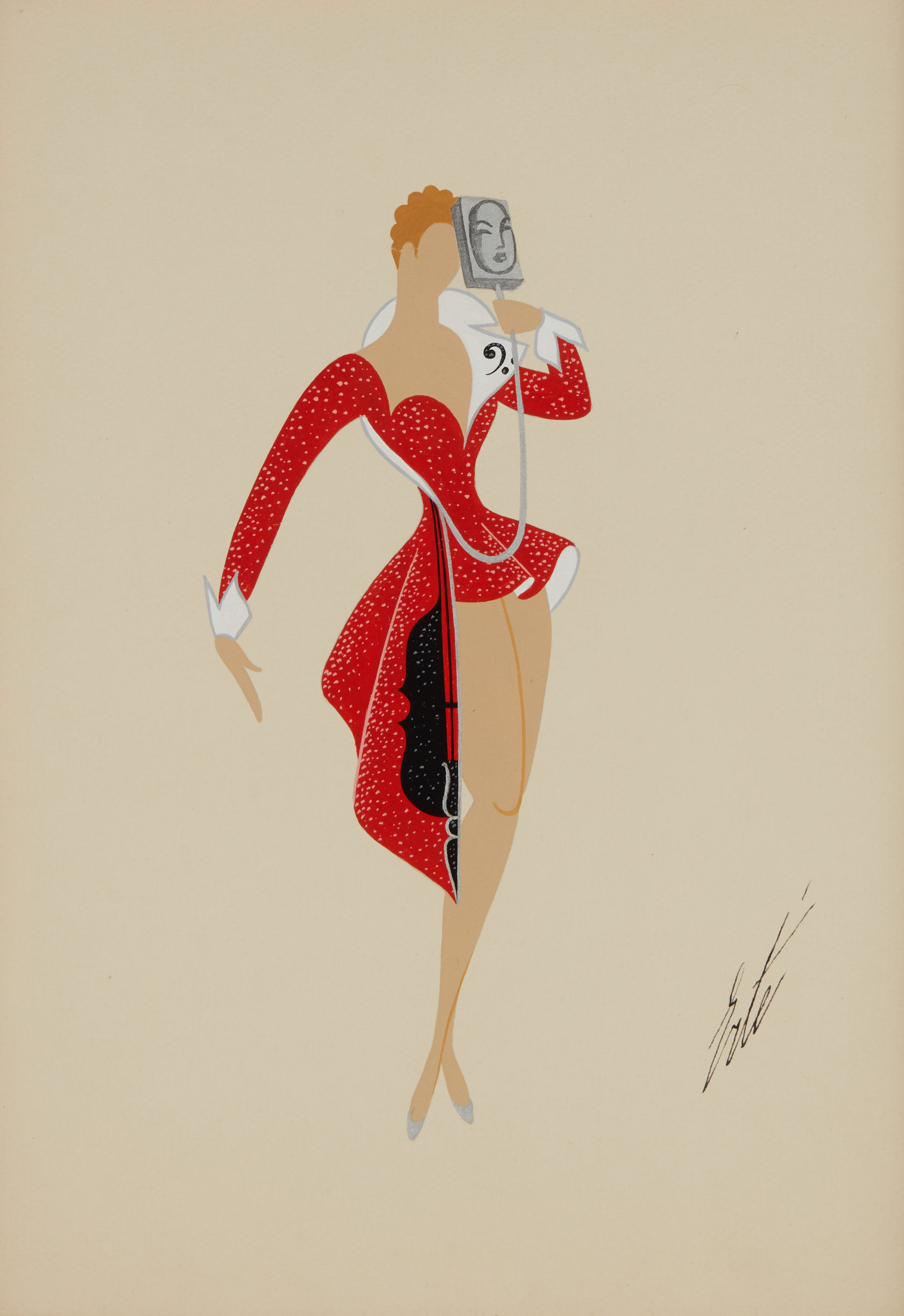
|
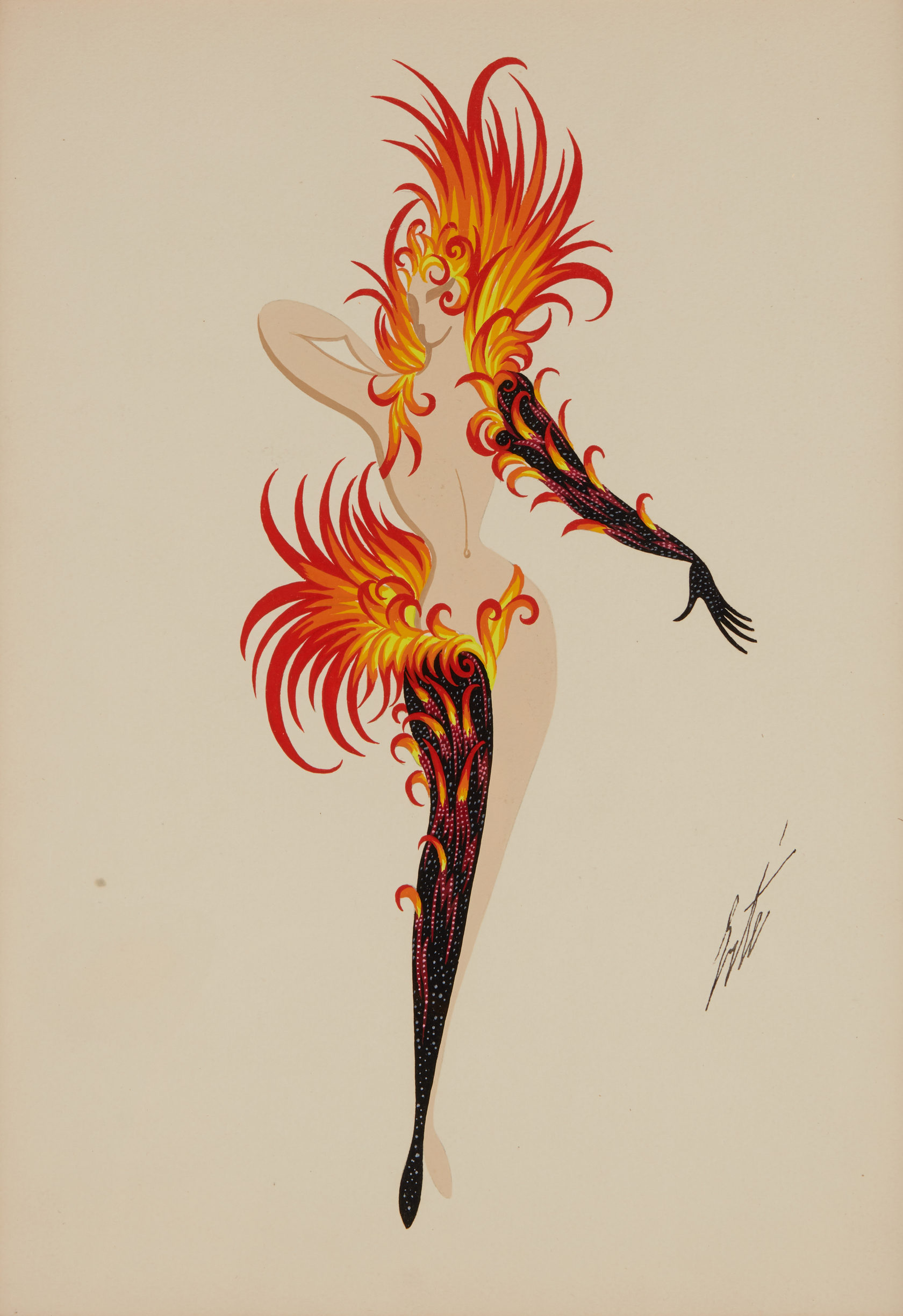
|
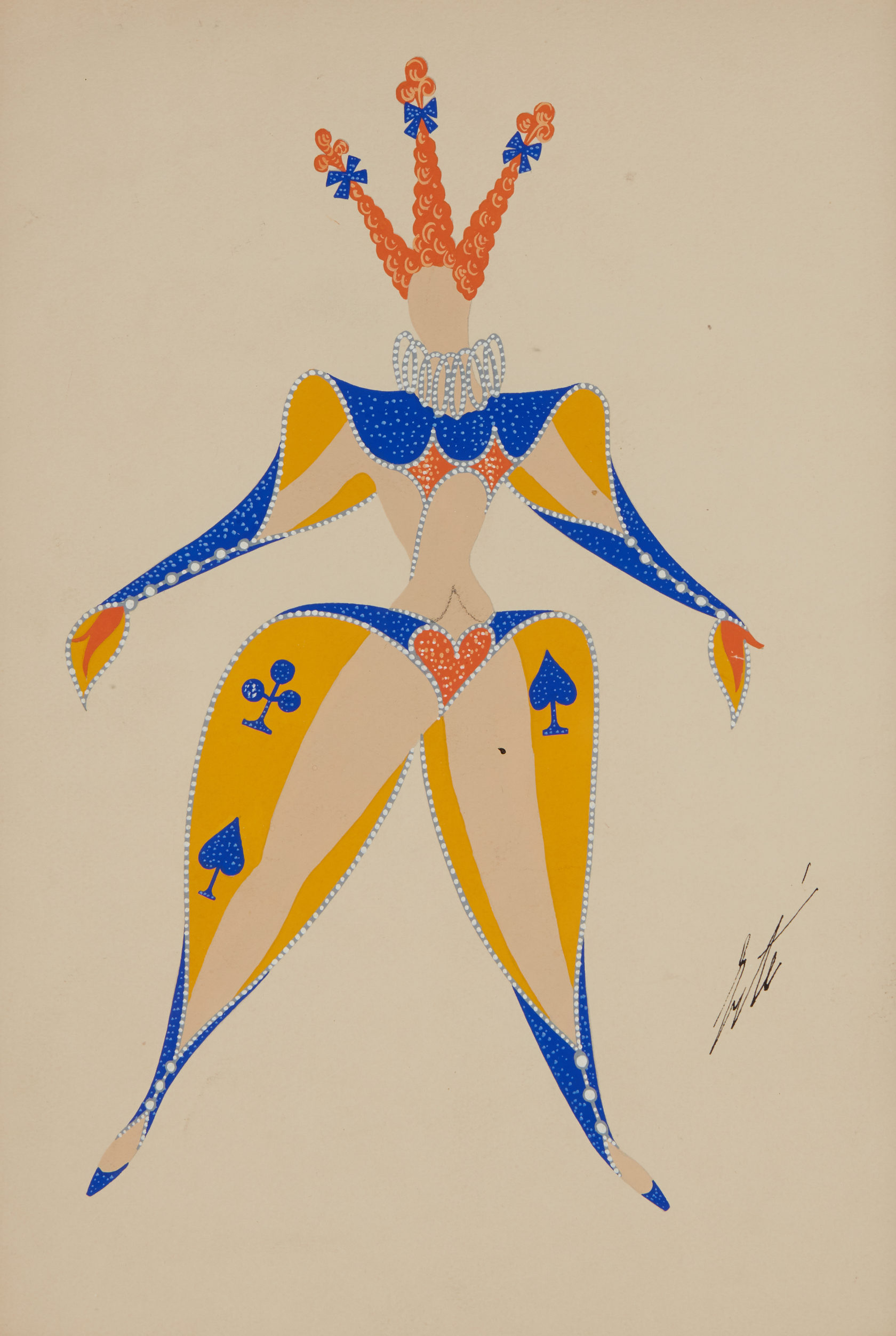
|
Erté (Roman Tyrtov ) (1892 - 1990)
Female forms by Art Deco genius:
Gouache on paper
33 x 24 cm. Signed lower right
Gouache on paper
33 x 24 cm. Signed lower right
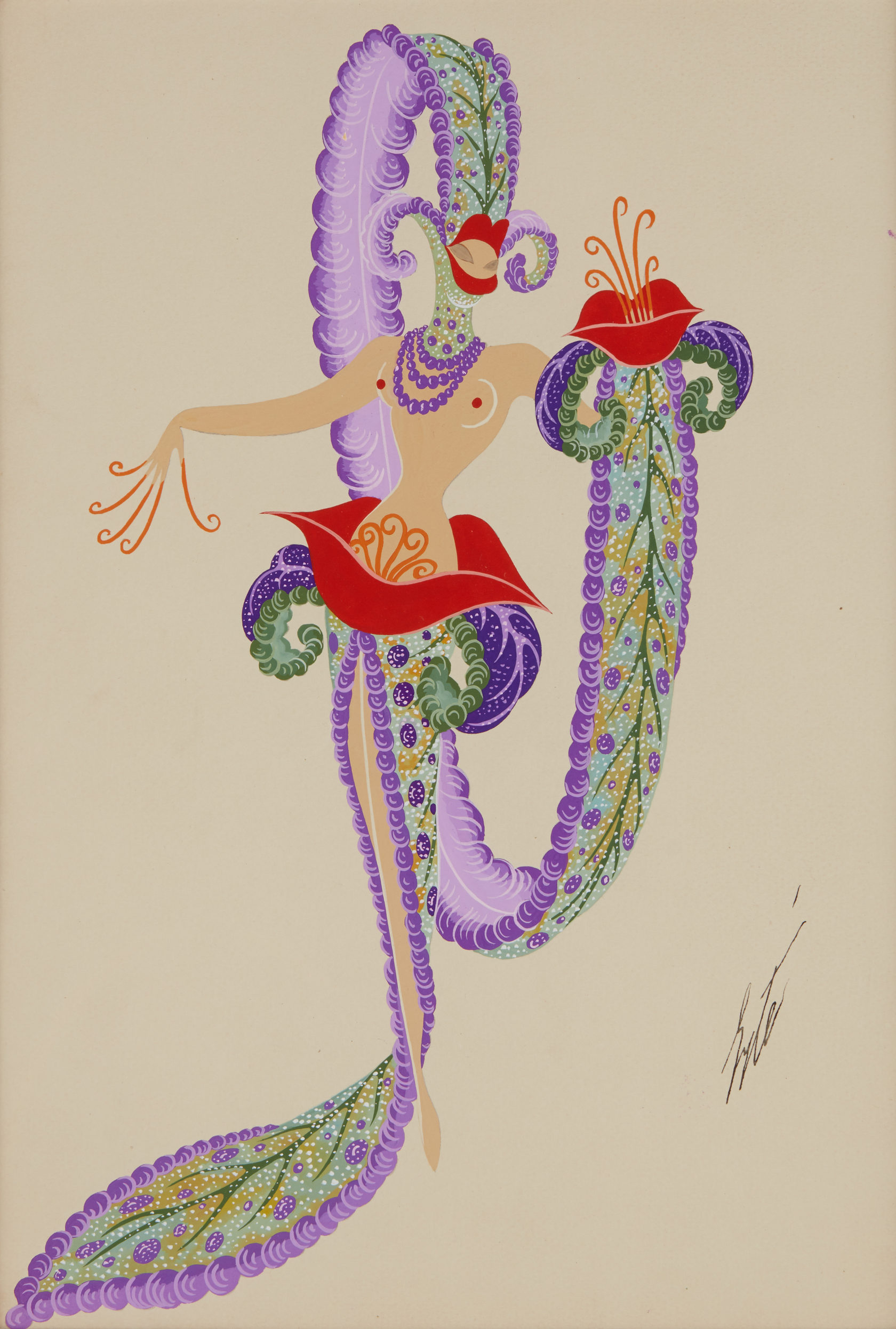
|
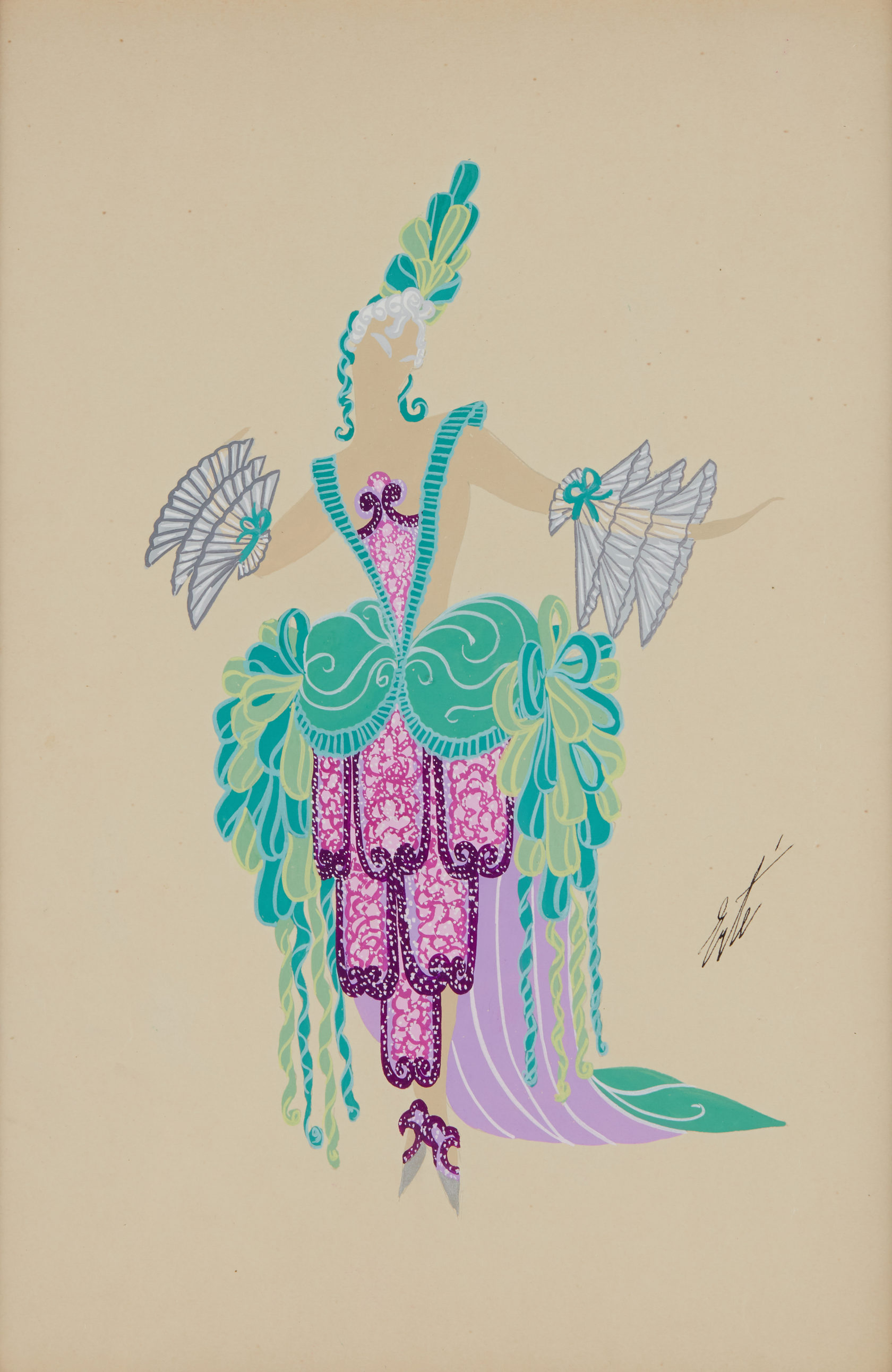
|
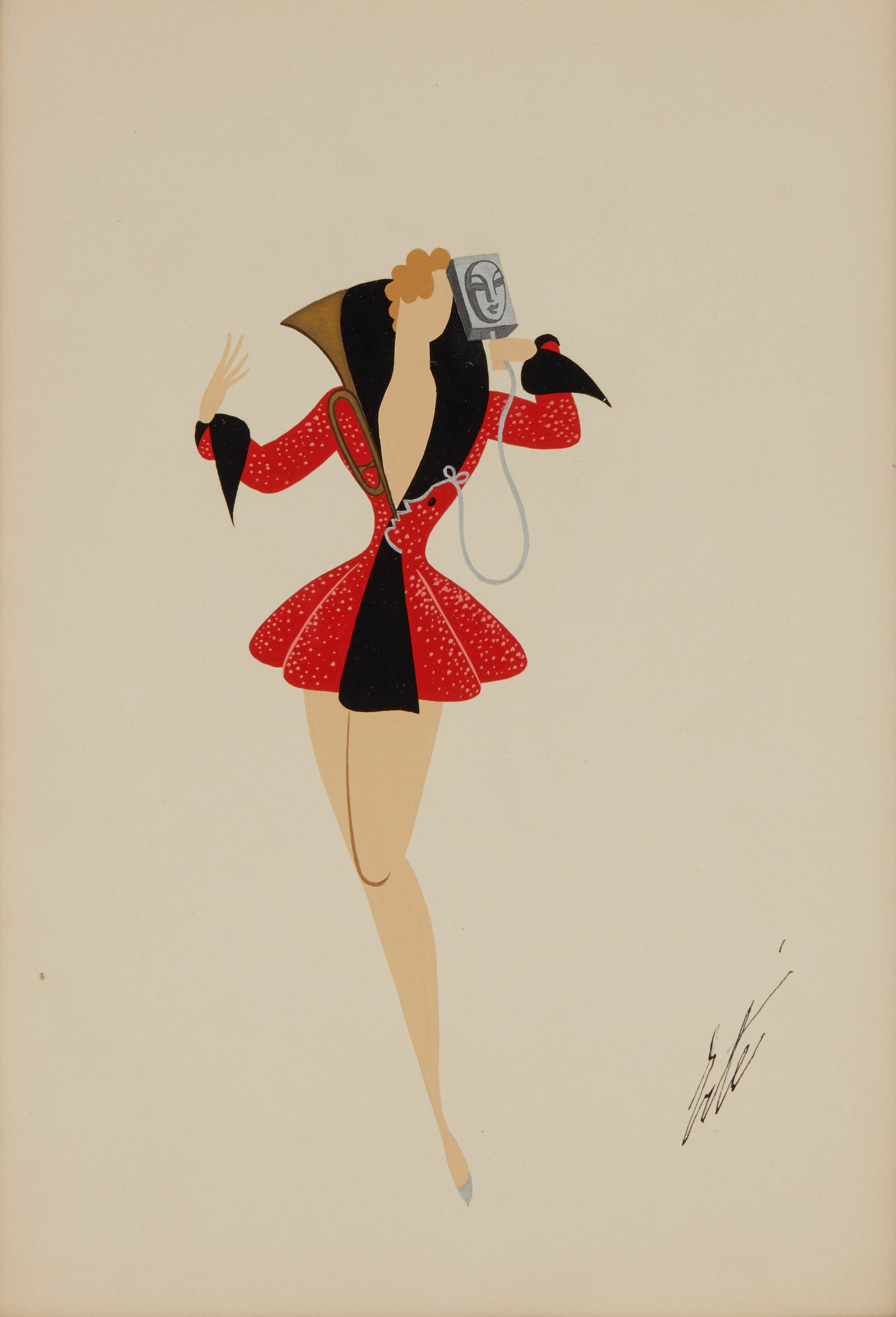
|
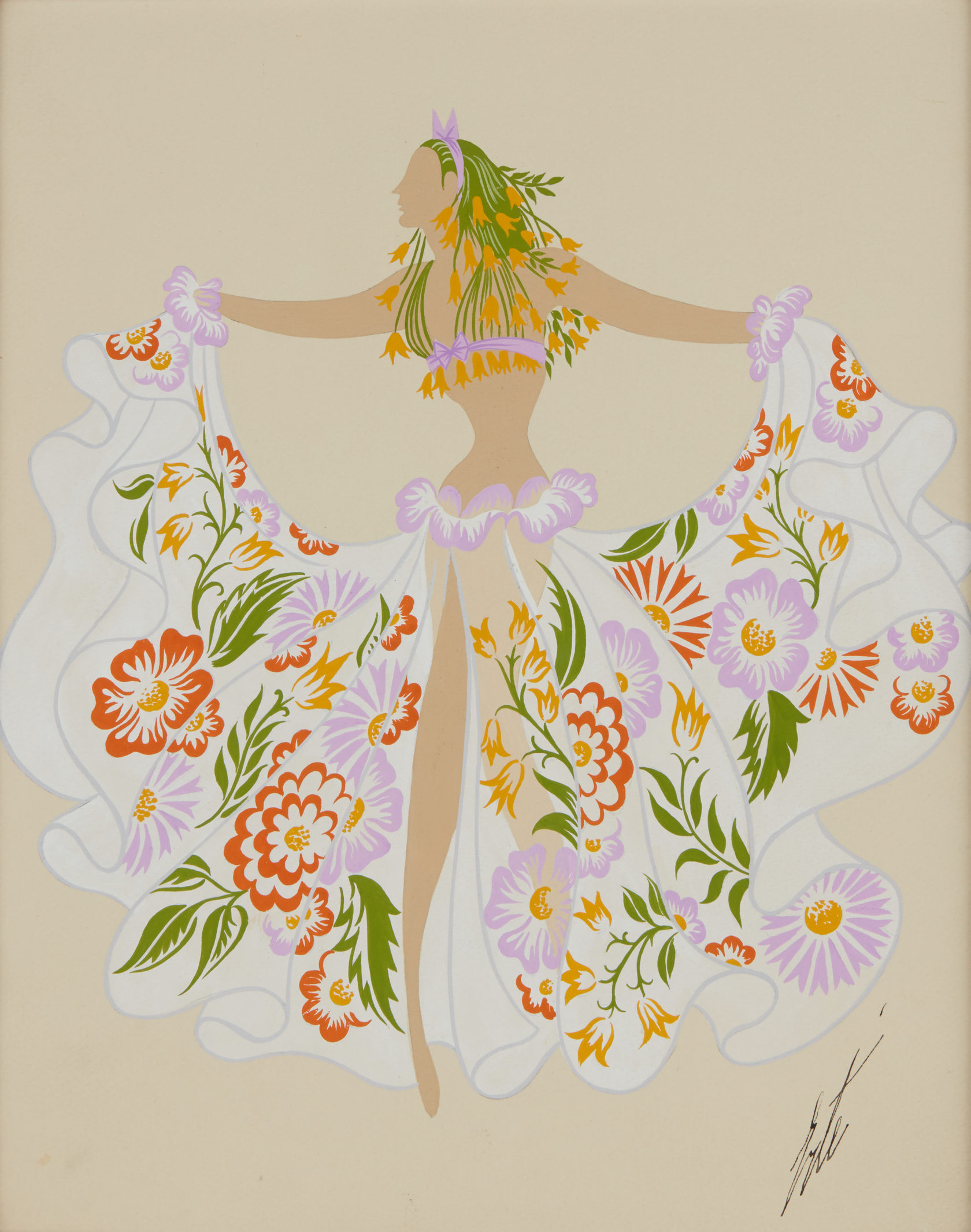
|
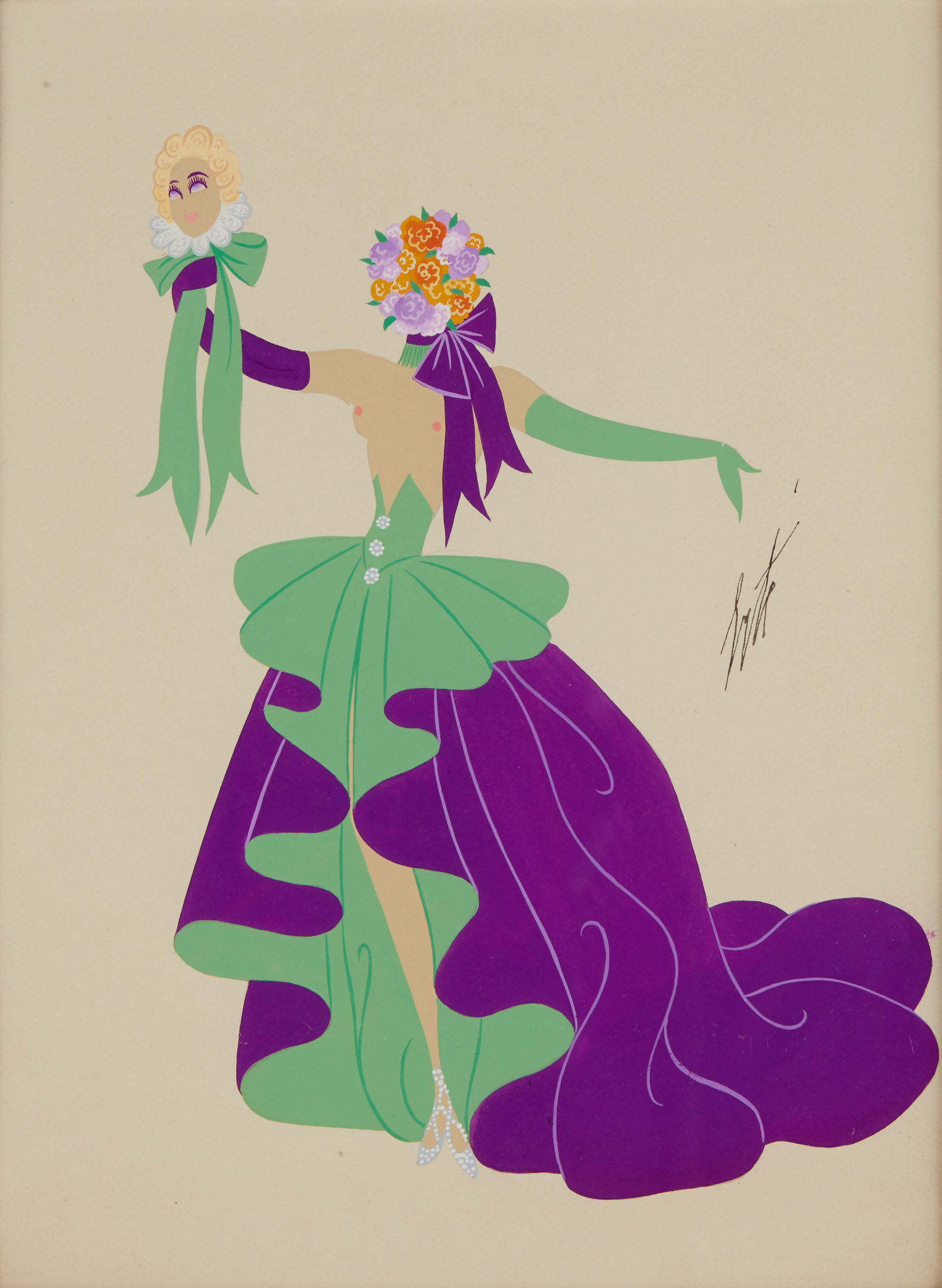
|
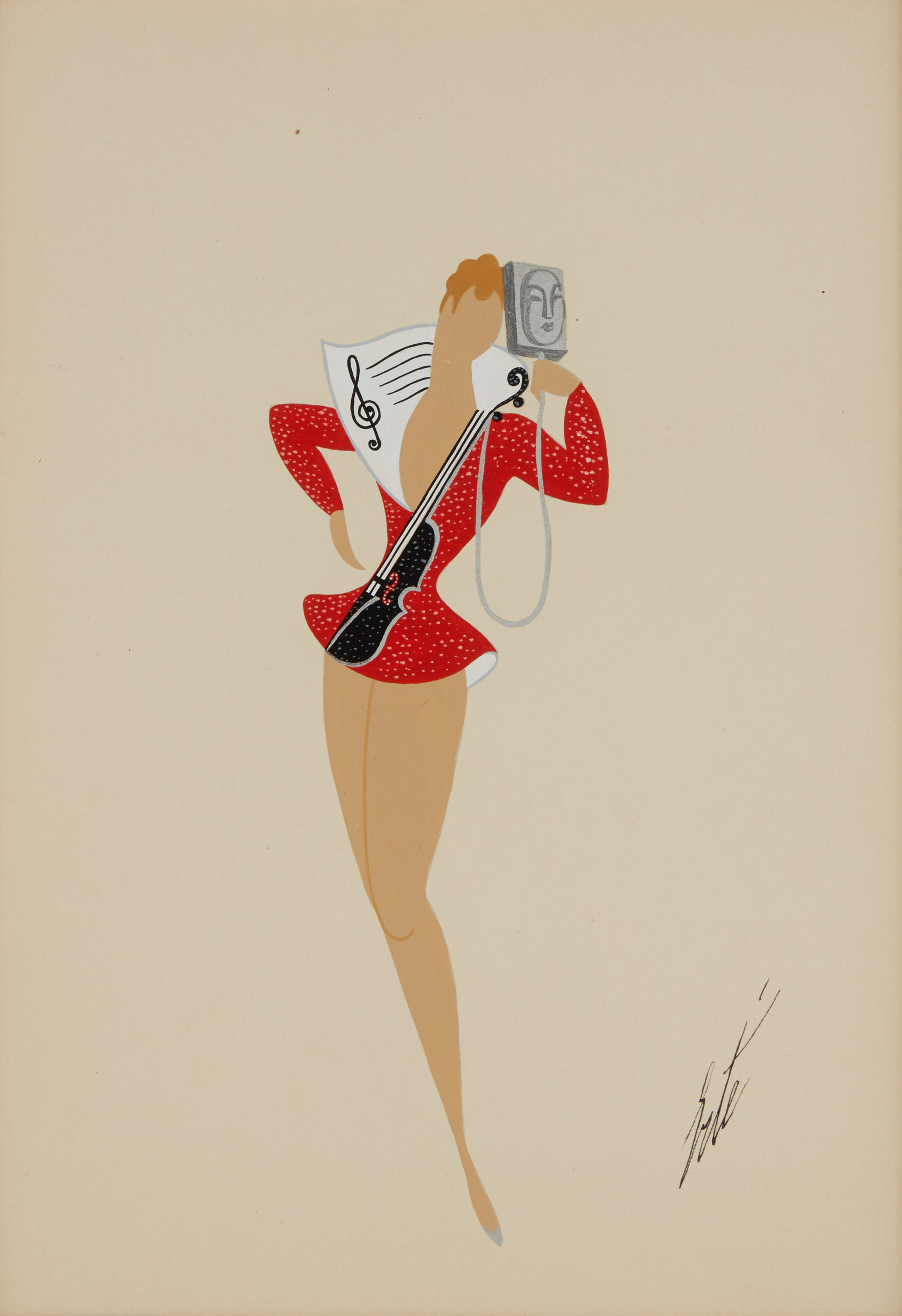
|